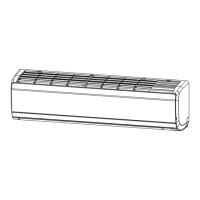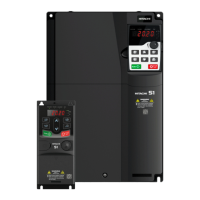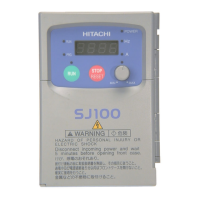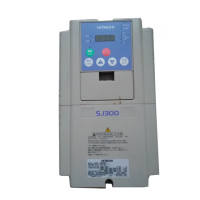6.2 Installation Environment
6.2 Installation Environment
The inverter uses plastic parts. When carrying
Do not carry the inverter by holding the front or
Avoid installing the inverter in a place where
the allowable range, as defined by the
standard inverter specification.
Temperature requirements vary
See “Chapter 20 Specifications”.
Carrier derating may be required.
Avoid installing the inverter in a place where
the relative humidity goes above or below the
allowable range (20% to 90% RH), as defined
by the standard inverter specification. Avoid a
place where the inverter is
6.2 Installation Environment
The inverter uses plastic parts. When carrying
Do not carry the inverter by holding the front or
Avoid installing the inverter in a place where
temperature goes above or below
the allowable range, as defined by the
standard inverter specification.
Temperature requirements vary
See “Chapter 20 Specifications”.
Carrier derating may be required.
Avoid installing the inverter in a place where
the relative humidity goes above or below the
allowable range (20% to 90% RH), as defined
by the standard inverter specification. Avoid a
place where the inverter is
6.2 Installation Environment
The inverter uses plastic parts. When carrying
e it carefully to prevent
Do not carry the inverter by holding the front or
Avoid installing the inverter in a place where
temperature goes above or below
the allowable range, as defined by the
standard inverter specification.
Temperature requirements vary
depending on the selected load rating.
See “Chapter 20 Specifications”.
Carrier derating may be required.
Avoid installing the inverter in a place where
the relative humidity goes above or below the
allowable range (20% to 90% RH), as defined
by the standard inverter specification. Avoid a
place where the inverter is
The inverter uses plastic parts. When carrying
e it carefully to prevent
Do not carry the inverter by holding the front or
Avoid installing the inverter in a place where
temperature goes above or below
the allowable range, as defined by the
standard inverter specification.
depending on the selected load rating.
Avoid installing the inverter in a place where
the relative humidity goes above or below the
allowable range (20% to 90% RH), as defined
by the standard inverter specification. Avoid a
The inverter uses plastic parts. When carrying
Do not carry the inverter by holding the front or
Avoid installing the inverter in a place where
temperature goes above or below
depending on the selected load rating.
Avoid installing the inverter in a place where
the relative humidity goes above or below the
allowable range (20% to 90% RH), as defined
by the standard inverter specification. Avoid a
Do not install and operate the inverter if it is
damaged or parts are missing.
Leave sufficient space around the inverter.
Measure the temperature in a position about 5
and check that the measured temperature is
within the allowable range. Operating the
inverter at a temperature outside this range will
shorten the inverter life (especially the
depending on the selected load rating.
Condensation inside the inverter will result in
short circuits and malfunctioning of electronic
parts. Also avoid places where the inverter is
exposed to direct sunlight.
Do not install and operate the inverter if it is
damaged or parts are missing.
Leave sufficient space around the inverter.
Measure the temperature in a position about 5
and check that the measured temperature is
within the allowable range. Operating the
inverter at a temperature outside this range will
shorten the inverter life (especially the
Condensation inside the inverter will result in
short circuits and malfunctioning of electronic
parts. Also avoid places where the inverter is
exposed to direct sunlight.
Do not install and operate the inverter if it is
damaged or parts are missing.
Leave sufficient space around the inverter.
Measure the temperature in a position about 5
and check that the measured temperature is
within the allowable range. Operating the
inverter at a temperature outside this range will
shorten the inverter life (especially the
Condensation inside the inverter will result in
short circuits and malfunctioning of electronic
parts. Also avoid places where the inverter is
exposed to direct sunlight.
Do not install and operate the inverter if it is
Leave sufficient space around the inverter.
Measure the temperature in a position about 5
and check that the measured temperature is
within the allowable range. Operating the
inverter at a temperature outside this range will
shorten the inverter life (especially the
Condensation inside the inverter will result in
short circuits and malfunctioning of electronic
parts. Also avoid places where the inverter is
Measure the temperature in a position about 5
inverter at a temperature outside this range will
Condensation inside the inverter will result in
short circuits and malfunctioning of electronic
parts. Also avoid places where the inverter is

